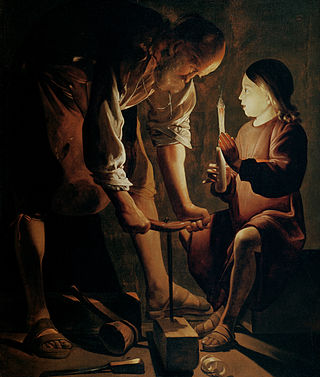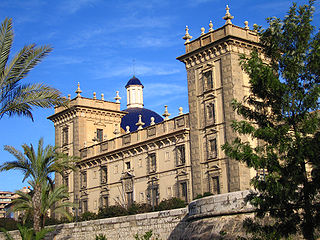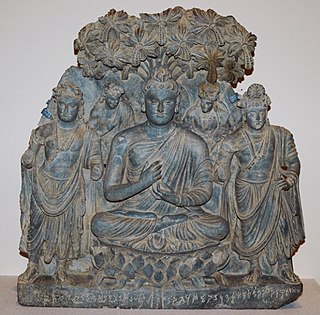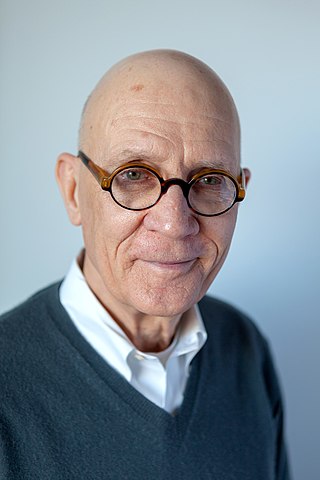
Domḗnikos Theotokópoulos, most widely known as El Greco, was a Greek painter, sculptor and architect of the Spanish Renaissance. El Greco was a nickname, and the artist normally signed his paintings with his full birth name in Greek letters, often adding the word Κρής, which means "Cretan".

Bartolomé Esteban Murillo was a Spanish Baroque painter. Although he is best known for his religious works, Murillo also produced a considerable number of paintings of contemporary women and children. These lively realistic portraits of flower girls, street urchins, and beggars constitute an extensive and appealing record of the everyday life of his times. He also painted two self-portraits, one in the Frick Collection portraying him in his 30s, and one in London's National Gallery portraying him about 20 years later. In 2017–18, the two museums held an exhibition of them.

The Prado Museum, officially known as Museo Nacional del Prado, is the main Spanish national art museum, located in central Madrid. It is widely considered to house one of the world's finest collections of European art, dating from the 12th century to the early 20th century, based on the former Spanish royal collection, and the single best collection of Spanish art. Founded as a museum of paintings and sculpture in 1819, it also contains important collections of other types of works. The Prado Museum is one of the most visited sites in the world and is considered one of the greatest art museums in the world. The numerous works by Francisco Goya, the single most extensively represented artist, as well as by Hieronymus Bosch, El Greco, Peter Paul Rubens, Titian, and Diego Velázquez, are some of the highlights of the collection. Velázquez and his keen eye and sensibility were also responsible for bringing much of the museum's fine collection of Italian masters to Spain, now one of the largest outside Italy.

The Kimbell Art Museum in Fort Worth, Texas, hosts an art collection as well as traveling art exhibitions, educational programs and an extensive research library. Its initial artwork came from the private collection of Kay and Velma Kimbell, who also provided funds for a new building to house it.

Georges de La Tour was a French Baroque painter, who spent most of his working life in the Duchy of Lorraine, which was temporarily absorbed into France between 1641 and 1648. He painted mostly religious chiaroscuro scenes lit by candlelight.

View of Toledo, is one of the two surviving landscapes painted by El Greco, along with View and Plan of Toledo. View of Toledo is held by the Metropolitan Museum of Art in New York City.

The Burial of the Count of Orgaz is a 1586 painting by El Greco, a prominent Renaissance painter, sculptor, and architect of Greek origin. Widely considered among his finest works, it illustrates a popular local legend of his time. An exceptionally large painting, it is divided into two sections, heavenly above and terrestrial below, but it gives little impression of duality, since the upper and lower sections are brought together compositionally.
El Greco (1541–1614) was a prominent painter, sculptor and architect active during the Spanish Renaissance. He developed into an artist so unique that he belongs to no conventional school. His dramatic and expressionistic style was met with puzzlement by his contemporaries but gained newfound appreciation in the 20th century.

El Greco, 1541 – April 7, 1614) was a prominent painter, sculptor and architect of the Spanish Renaissance, whose dramatic and expressionistic style was met with puzzlement by his contemporaries but found appreciation in the 20th century.

The Museu de Belles Arts de València is an art gallery in Valencia, Spain, founded in 1913. It houses some 2,000 works, most dating from the 14th–17th centuries, including a Self portrait of Diego Velázquez, a St. John the Baptist by El Greco, Goya's Playing Children, Gonzalo Pérez's Altarpiece of Sts. Ursula, Martin and Antony and a Madonna with Writing Child and Bishop by the Italian Renaissance master Pinturicchio. It houses a large series of engravings by Giovan Battista Piranesi.
Jonathan Mayer Brown was an American art historian, known for his work on Spanish art, particularly Diego Velázquez. He was Carroll and Milton Petrie Professor of Fine Arts at New York University.

Francisco de Palacios, also Francisco Palacios,, was a Spanish Baroque painter.

The El Greco Museum is located in Toledo, Spain. It celebrates the mannerist painter El Greco, who spent much of his life in Toledo, having been born in Fodele, Crete.

Portrait of Fernando Niño de Guevara is a 1600 painting of cardinal Fernando Niño de Guevara by El Greco, now in the Metropolitan Museum of Art in New York.

Self-Portrait or Portrait of an Old Man is an oil-on-canvas painting by El Greco, dating to between 1595 and 1600 and usually identified as a self-portrait. It shows the influence of Titian and Tintoretto, whose works El Greco studied in Venice. It is now in the Metropolitan Museum of Art in New York.

Portrait of Antonio de Covarrubias is a 1595-1600 oil on canvas painting by El Greco, dating to his time in Toledo. It is now in the Louvre in Paris as the result of an exchange with Spanish museums in 1941.

The Brussels Buddha is a famous Buddha statue from the Greco-Buddhist art of Gandhara. It is named after the first collection to which it belonged, the Claude de Marteau collection in Brussels, Belgium, although it is now in a private collection in Japan, belonging to the Agonshū sect of Buddhism. The Brussels Buddha belongs to the category of the "Seated Buddha triads", which can be seen contemporaneously in the Greco-Buddhist art of Gandhara and in the art of Mathura in the early Kushan period. The precise location where the statue was discovered is unknown, but it was acquired in Peshawar, and it is thought to have been excavated in Sahri Bahlol due to its similarity with a statue from the same location, now in the Peshawar Museum.

William Bryan Jordan Jr. was an American art historian who facilitated acquisitions, curated exhibitions, and authored publications on Spanish artists and still life paintings, particularly from the Golden Age.

Aureliano de Beruete y Moret was an art critic and historian; son of the painter, Aureliano de Beruete. He served as Director of the Museo del Prado from 1918 until his death.















